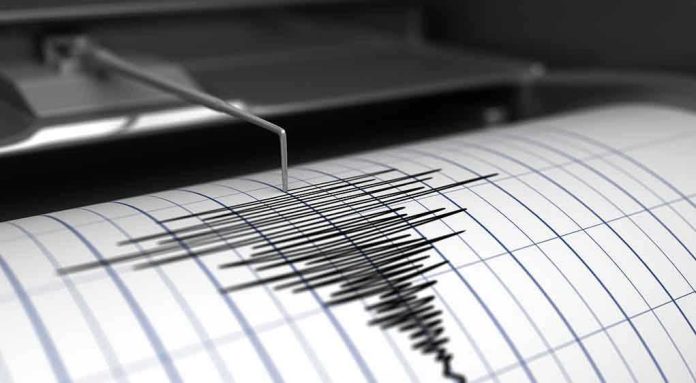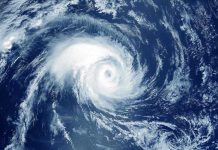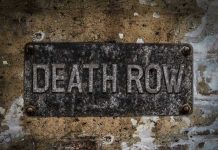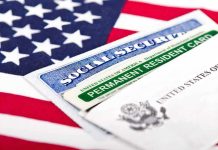
Two massive West Coast faults may be physically linked, raising the threat of a catastrophic double earthquake that could devastate millions and disrupt America’s backbone.
Story Snapshot
- Groundbreaking research finds the San Andreas Fault and Cascadia Subduction Zone are historically linked, enabling synchronized quakes.
- Evidence shows multiple instances of near-simultaneous ruptures over the past 10,000 years, with a near-perfect matchup in the last 2,500 years.
- A “double quake” could cripple infrastructure and economies in California, Oregon, and Washington, exposing weaknesses in preparedness.
- Scientists urge immediate updates to disaster planning, emphasizing the need to defend communities and critical systems from unprecedented risk.
Research Reveals a Hidden Threat: Fault Synchronization Could Double Destruction
In September 2025, Oregon State University scientists published new research revealing a physical and temporal connection between two of the West Coast’s largest fault systems—the San Andreas Fault and the Cascadia Subduction Zone. This breakthrough indicates that a rupture in one fault could trigger the other, creating a devastating “double quake” scenario. Stratigraphic and radiocarbon evidence supports the possibility, with records showing multiple instances of synchronized ruptures over the past 10,000 years. Such findings overturn decades of conventional wisdom that treated these faults as independent threats.
The potential for a cascading seismic event highlights critical vulnerabilities in current emergency preparedness and infrastructure planning. Historically, the West Coast’s disaster response focused on single-fault scenarios, but this new research shows the importance of updating hazard models and risk assessments. The densely populated regions along both faults, including San Francisco, Portland, and Seattle, house essential infrastructure such as transportation networks, utilities, and hospitals. If a double quake were to occur, millions could face catastrophic damage, and communities might struggle for months or years to recover.
Historic Evidence Points to Real Risk: Lessons from Past Earthquakes
Analysis of paleoseismic records reveals that the Northern San Andreas Fault and Cascadia Subduction Zone have ruptured in near-perfect synchrony at least several times over the last 2,500 years. Notable events include the 1906 San Francisco earthquake and the 1700 Cascadia megaquake, which launched a tsunami that reached Japan. The Mendocino Triple Junction, where these faults meet, serves as a focal point for this dangerous interaction. Advances in stratigraphic analysis now make it clear that the faults’ behaviors are more interconnected than previously understood, demanding an urgent reevaluation of the region’s seismic risk.
Researchers emphasize that the threat is not just theoretical. Chris Goldfinger of Oregon State University has stated, “If Cascadia went off, I would take that pretty seriously [as] a very clear advance warning for the northern San Andreas.” This expert opinion underscores the importance of coordinated disaster planning and the need for robust public awareness campaigns. The devastation wrought by past earthquakes on these faults serves as a sobering reminder of what could happen if both were to rupture in rapid succession.
Impact on Communities, Economy, and Conservative Values
The implications of a double quake extend far beyond physical destruction. Millions of residents in California, Oregon, and Washington would be at risk, and critical infrastructure could be crippled, leading to widespread economic losses and disruptions in social services. The insurance and construction sectors may soon face stricter standards, and emergency management agencies are being pressured to invest in enhanced coordination and resilience. For conservatives, the threat highlights the need for responsible governance—prioritizing American safety, defending property rights, and ensuring local and state agencies are equipped to respond without federal overreach or bureaucratic delays.
Political leaders and agencies, including state governors and FEMA, are being urged to act decisively. The Trump administration’s renewed focus on national security and infrastructure protection aligns with calls to strengthen preparedness and resist any agenda that underplays these risks. This is an opportunity to demand accountability from public officials and insist that constitutional liberties, community stability, and family values are preserved in times of crisis. Defending the homeland from natural disasters is as vital as protecting it from any other threat.
Urgency for Action: Updating Preparedness and Defending the Homeland
As scientific consensus builds around the plausibility of linked fault ruptures, uncertainty remains regarding the precise timing and triggers of such events. Nonetheless, the evidence is strong enough for emergency planners, businesses, and residents to reevaluate their risk models and response strategies immediately. The short-term priority must be to accelerate public awareness, conduct infrastructure assessments, and revise disaster protocols. In the long term, building codes, insurance policies, and emergency management practices will need to adapt to new realities.
For conservative Americans, this issue is not only about science but also about ensuring responsible leadership and defending the constitution against policies that ignore real threats. The double quake scenario is a wake-up call—reminding us that preparedness, resilience, and common sense must drive our national response. As new research shapes the future of risk management, it is essential to demand transparency, reject government overreach, and stand united in protecting our families and communities from unprecedented natural dangers.
Sources:
Cascadia Earthquake Can Trigger San Andreas Fault













